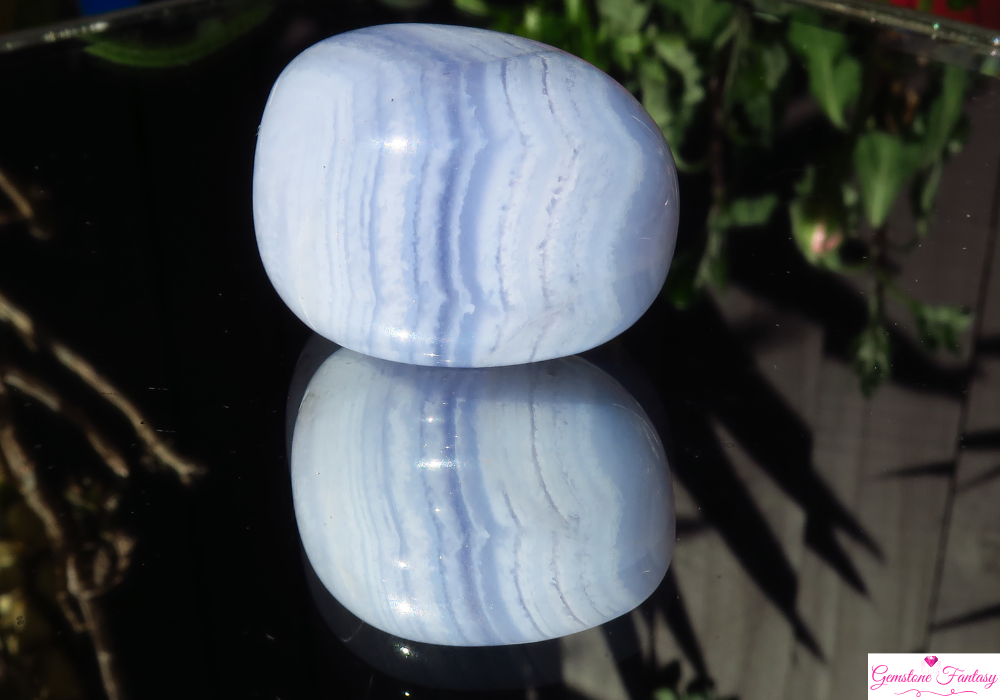Howlite is a calming white or grey gemstone often recognized by its striking veining, which can range from black to dark grey. Named after the Canadian mineralogist Henry How, who first discovered it in Nova Scotia, Howlite is a popular gemstone in both the world of jewelry and metaphysical practices. While it is typically found in its natural white form, it is often dyed to resemble other stones, particularly turquoise, making it a versatile stone in terms of design and color.
Geological Formation
Howlite is a borate mineral, formed in sedimentary rock as the result of calcium boron silicate deposits. It occurs in the form of nodules that can resemble cauliflower heads, and its formation is often linked to evaporative processes in boron-rich environments. Howlite is generally found in regions where high concentrations of borates are present, including places like Canada, the USA (particularly California), and parts of Turkey.
The gemstone’s porous nature allows it to absorb dyes easily, making it a popular substitute for pricier stones like turquoise and lapis lazuli in the market.
Varieties and Classifications
While the most common and natural form of Howlite is white with grey or black veins, there are a few variations worth noting:
- White Howlite: The most widely available and natural form, known for its calming appearance.
- Dyed Howlite: Due to its porous structure, Howlite is often dyed in vibrant colors like blue, green, and pink to resemble other gemstones. Dyed Howlite is particularly popular as an affordable alternative to turquoise.
- Veinless Howlite: Some specimens of Howlite are free of veining, making them more rare but less visually distinct.
Cultural Significance and Folklore
Although Howlite was discovered relatively recently compared to other gemstones, it has quickly gained popularity in metaphysical circles. Known as a “stone of tranquility,” Howlite is widely used to aid in meditation and stress relief.
In various cultures, Howlite is seen as a calming stone that can help balance emotions and alleviate stress. Some believe that it has the ability to bring patience and peaceful energy, making it a popular choice for those seeking emotional healing or inner peace. Though it lacks a deep historical significance, its soothing qualities have made it a staple in modern crystal healing practices.
Birthstone and Zodiac Connections
Howlite is not traditionally associated with any specific birthstone month, but it has been linked to the zodiac sign Gemini (May 21 – June 20). Geminis, known for their quick minds and occasional bouts of anxiety, may benefit from Howlite’s calming properties to help balance their dual nature and restless energy.
Some astrologers recommend Howlite to those experiencing emotional turbulence or seeking to calm their minds, regardless of their zodiac sign.
Healing and Metaphysical Properties
Howlite is highly regarded for its calming and soothing energies. Though these associations should be approached with an open mind, many crystal enthusiasts believe that Howlite can provide the following metaphysical benefits:
- Calmness and Patience: Howlite is thought to help reduce anger, stress, and tension, making it a favored stone for people seeking peace in chaotic environments.
- Emotional Healing: It is said to aid in emotional expression and balance, helping individuals to release negative feelings and foster a sense of calm.
- Communication and Awareness: Howlite is often used in meditative practices to enhance patience and improve communication, particularly in difficult situations.
- Spiritual Growth: Some people believe Howlite can help to open and attune the crown chakra, enabling deeper meditation and connection with spiritual realms.
Howlite is also considered a great companion for restful sleep, and many individuals place it under their pillow to alleviate insomnia or overactive thoughts.
Popular Uses in Jewelry and Design
Howlite’s versatile appearance makes it a popular choice for a wide range of jewelry and design applications. Its neutral white hue makes it easy to pair with various metals and settings, giving it a sleek and modern aesthetic. It is commonly used in:
- Beaded Jewelry: Howlite beads are frequently used in bracelets, necklaces, and earrings, often combined with other colorful gemstones.
- Cabochon Rings and Pendants: Smooth, polished Howlite stones are often set into rings and pendants, showcasing the natural beauty of its veined patterns.
- Chakra Jewelry: Howlite is a popular choice in chakra healing bracelets or pendants, thanks to its calming properties.
- Dyed Howlite: Dyed to mimic other stones like turquoise, Howlite offers an affordable option for those who want the aesthetic without the higher price tag.
Due to its relatively low hardness (about 3.5 on the Mohs scale), Howlite is best suited for pieces that don’t face rough wear and tear, like pendants, earrings, or beads.
How to Identify Authentic Howlite
Since Howlite is often dyed to resemble other stones, such as turquoise or lapis lazuli, it is important to know how to distinguish authentic Howlite from imitations. Here are a few tips:
- Veining: Authentic Howlite has a distinctive white base color with grey or black veining. If the color looks too uniform or overly vibrant, it may be dyed.
- Porosity: Howlite is a porous stone, which makes it absorb dye easily. You can test this by placing the stone in acetone (nail polish remover) to see if any color rubs off. Authentic white Howlite should not show any color change.
- Weight: Howlite is a relatively lightweight stone, so if you’re holding something that feels unusually heavy, it could be an imitation or composite.
- Price: Authentic Howlite is generally inexpensive, so if a piece is being sold at a very high price and marketed as turquoise, it may simply be dyed Howlite.
Tips for Caring and Storing
Howlite is a relatively soft stone, so it requires careful handling to avoid scratches or damage. Here are some tips to help maintain its appearance:
- Cleaning: Clean Howlite with mild soapy water and a soft cloth. Avoid using harsh chemicals or ultrasonic cleaners, which can damage the stone or cause it to lose its polish.
- Storage: Store Howlite jewelry separately from harder gemstones like diamonds or sapphires to prevent scratching. Use a soft pouch or fabric-lined jewelry box for added protection.
- Avoid Excess Heat: Since Howlite is often dyed, excessive heat can cause discoloration or fading. Keep Howlite away from prolonged sunlight or high temperatures.
Market Trends and Pricing
Howlite is an affordable gemstone, often used as a substitute for more expensive stones like turquoise. Due to its low cost, it is popular in fashion jewelry and chakra healing items. The price for Howlite generally depends on the size, quality, and whether the stone is natural or dyed.
Natural white Howlite tends to be less expensive, while dyed Howlite that imitates other gemstones can vary in price depending on the quality of the dyeing process and the market demand for the look it imitates.
Final Thoughts
Howlite is a versatile and attractive gemstone, known for its calming properties and elegant appearance. Whether used in jewelry, metaphysical practices, or as an alternative to more expensive stones, Howlite offers a range of possibilities for those looking for a soothing and affordable gemstone. With proper care, it can remain a beautiful and meaningful part of any collection, providing tranquility and balance in a fast-paced world.

















